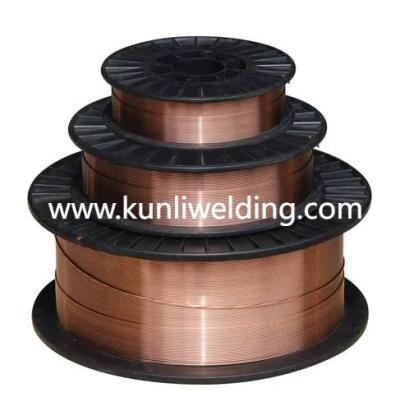Categories
Tags
-
#Aluminum Welding Wire ER5087
#Aluminum Welding Wire Manufacturers
#Kunliwelding Aluminum Welding Wire
#Aluminum Alloy Welding Wire Suppliers
#Aluminum Alloy Welding Wire
#Kunliwelding Aluminum Alloy Welding Wire
#Aluminum Welding Wire ER4943
#China Aluminum Alloy Wire Manufacturers
#Aluminum Mig Wire Manufacturers
#Aluminum Mig Wire
#Kunliwelding Aluminum Mig Wire
#Aluminum Welding Wire
Archives
Sustainable Rail Welding with Advanced Aluminum Welding Wire So
-
Posted by Jason Robby Filed in Technology #Aluminum Welding Wire Manufacturers #Kunliwelding Aluminum Welding Wire #Aluminum Welding Wire ER4943 430 views
When high speed rail projects demand ever lighter train bodies and flawless surface finish, engineers turn to innovative joining techniques that eliminate the need for post weld grinding. Aluminum Welding Wire ER4943 plays a central role in achieving smooth, no grind weld beads on 6005A profiles, combining alloy chemistry and controlled deposition to create uniform seams that blend seamlessly with extruded sections.
The push for faster, more energy efficient rail systems has elevated demands on material performance. In lightweight car shells, every gram saved translates into higher speeds and lower energy consumption. Traditional MIG welds often leave ripples and slight undercuts that require time consuming grinding to meet aerodynamic and aesthetic standards. By selecting a filler wire with optimized fluidity and wetting characteristics, fabricators can lay down welds that self level during solidification, producing surfaces ready for coating without additional machining.
Key to this development is the interplay between base metal and filler composition. The 6005A alloy features a balance of strength and formability suited for rail car components. When melted with ER4943, which contains carefully calibrated amounts of silicon and magnesium, the molten pool exhibits reduced surface tension and improved flow. As the weld cools, the bead transitions smoothly into the parent metal, minimizing the need for manual finishing. This efficiency not only speeds production but also reduces labor costs and scrap from over grinding.
Automated welding stations further amplify these benefits. Robotic arms programmed with precise travel speeds and pulsation parameters ensure consistent heat input along curved or straight sections of car bodies. Integrated vision systems monitor seam alignment and adjust torch position in real time. When paired with stable feed performance of high quality wire spools, the result is a series of flawless welds that meet stringent tolerances for dimensional accuracy and surface integrity.
Beyond the shop floor, the technique aligns with broader manufacturing trends toward digitalization and green production. Eliminating grinding reduces airborne particulate emissions and noise exposure, contributing to healthier work environments. Less post weld processing also cuts power use in grinders and lowers abrasive consumption. As rail operators seek suppliers who support sustainable practices, welding solutions that streamline finishing become key differentiators in supply chain selection.
Training and process validation are critical steps in implementing no grind welds at scale. Fabricators conduct trials on representative panel sections, evaluating bead profiles under various travel speeds and shielding gas compositions. Metallurgical analysis confirms fusion quality and absence of subsurface flaws. Once parameters are locked in, standard operating procedures and weld procedure specifications guide technicians and robots alike, ensuring repeatable results across production batches.
Maintenance of equipment also contributes to consistent outcomes. Regular inspection of contact tips and liners prevents wire spooling issues that could disturb arc stability. Clean gas lines and qualified regulators uphold shielding integrity, minimizing porosity risks that would require rework. Wire spools stored in humidity controlled environments maintain optimal feeding behavior, essential for flawless seam appearance on every weld.
As rail car designs evolve with more complex curvatures and integrated components, the ability to weld and finish in a single pass offers tremendous operational flexibility. Folded roof panels, tapered sidewalls, and intricate support brackets benefit from welds that require no extra surface dressing. This adaptability accelerates prototyping and custom fleet variations, allowing manufacturers to respond rapidly to market shifts or specialized client requirements.
Future developments may see further refinement in alloy blends and deposition control. Microalloying elements could enhance bead self leveling, while advanced welding power sources refine heat input profiles for thinner section welding. Data analytics drawn from welding cell sensors will enable predictive adjustments, maintaining optimal bead geometry even as consumable lots or environmental conditions vary.
By embracing advanced filler metallurgy and automated control, high speed rail fabricators gain a competitive edge. The synergy between 6005A structures and no grind ER4943 welding transforms traditional joining into a seamless, sustainable process that meets the exacting demands of modern transport networks. For more information on high performance aluminum welding techniques and product offerings visit www.kunliwelding.com .
